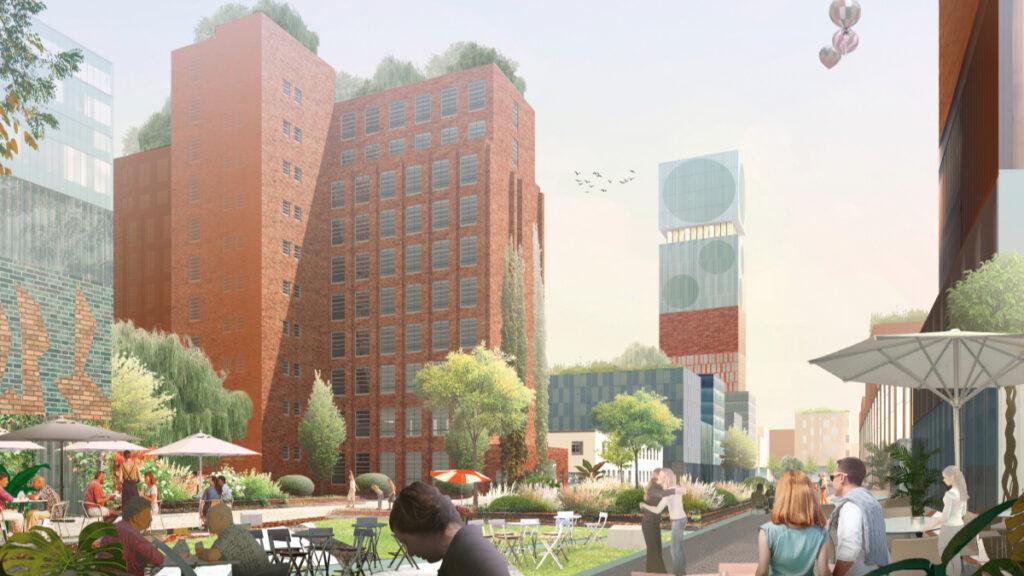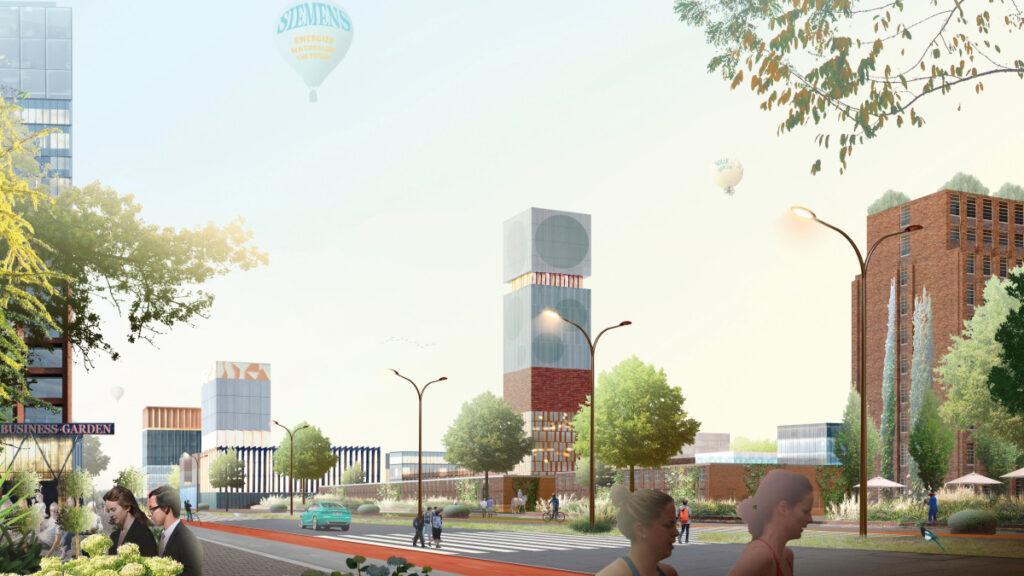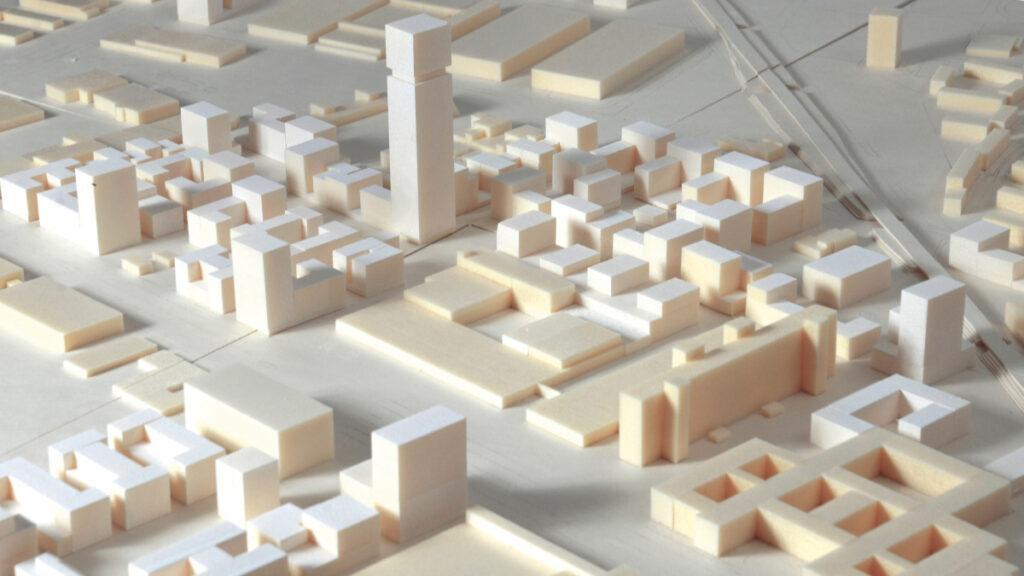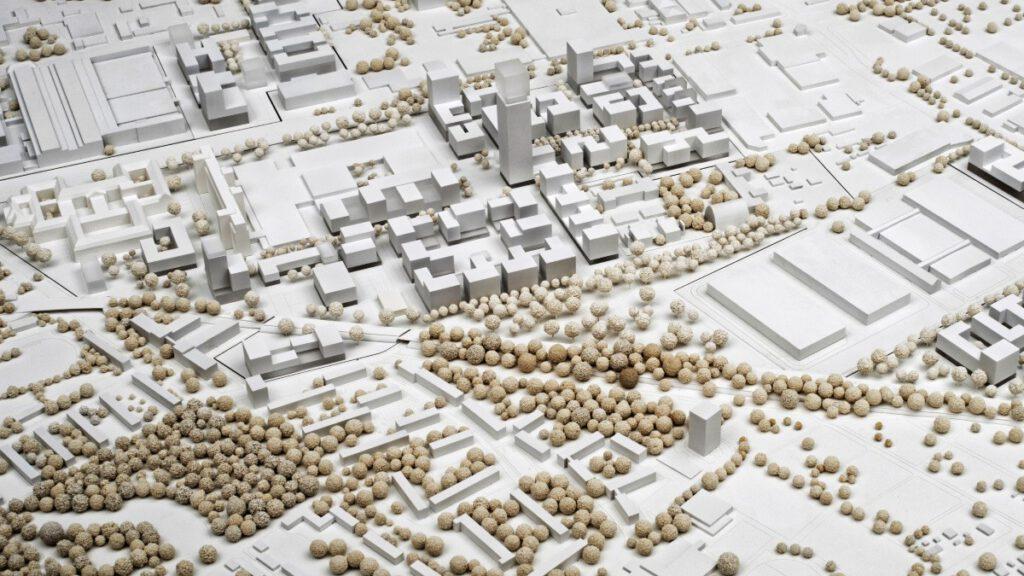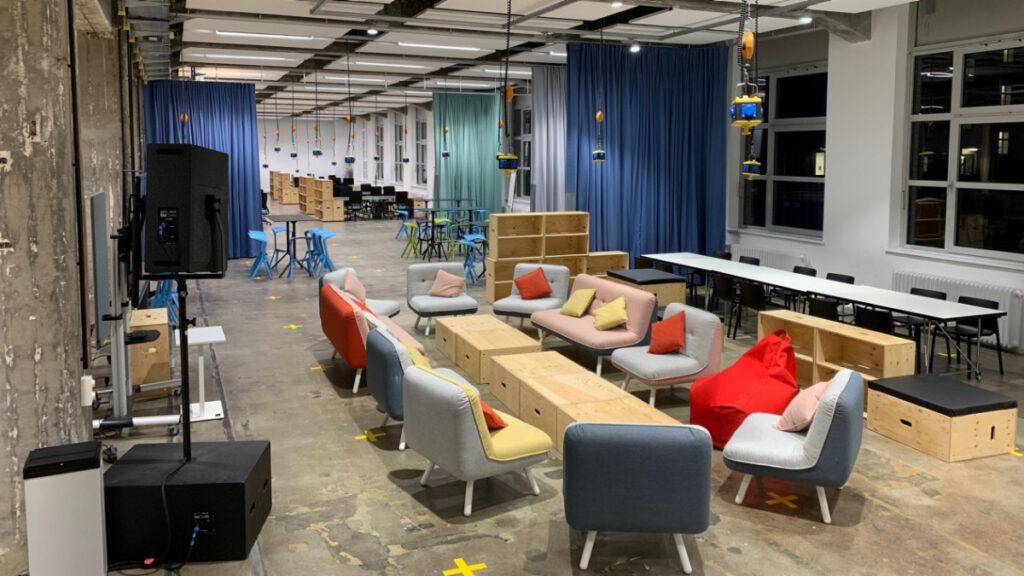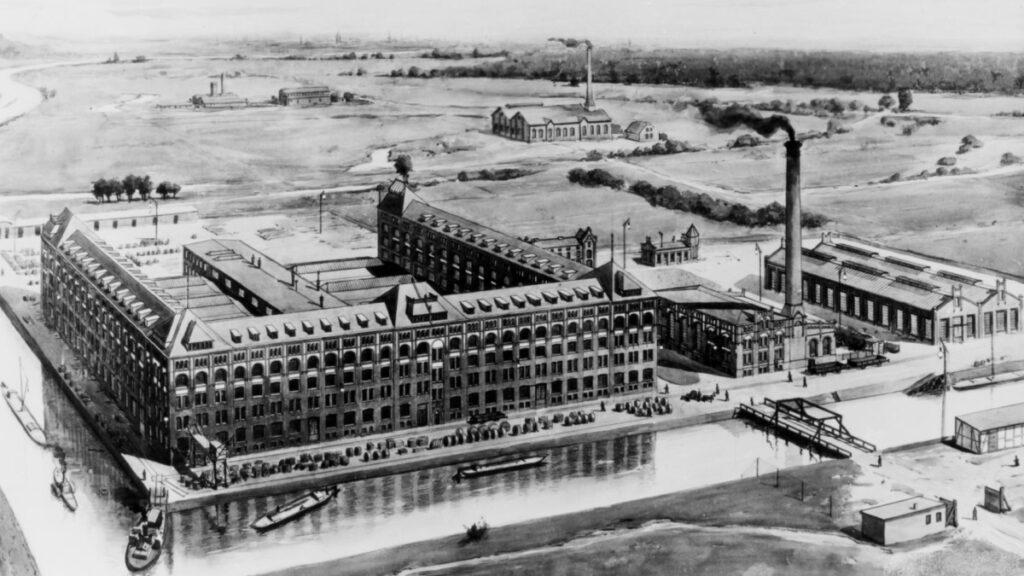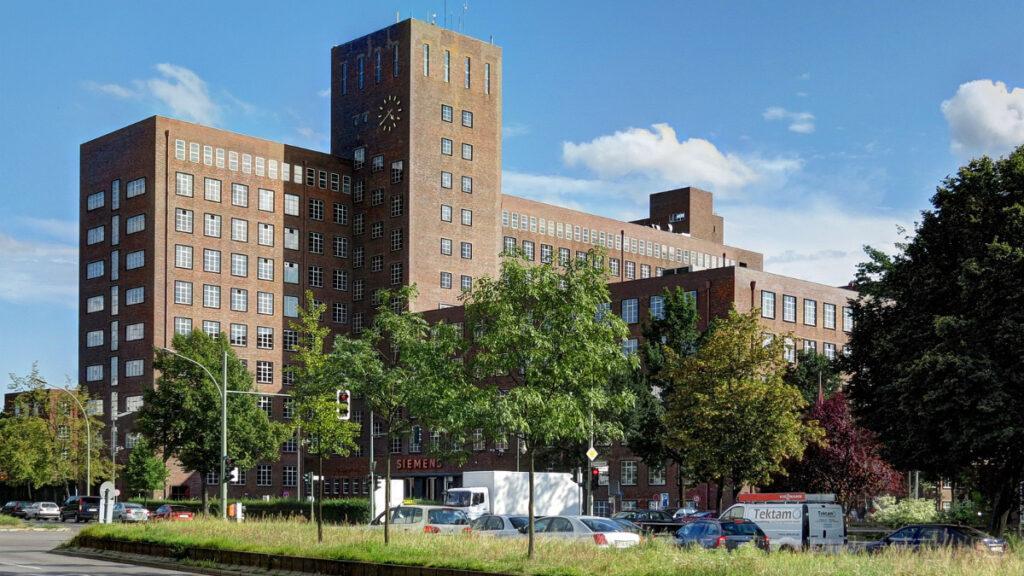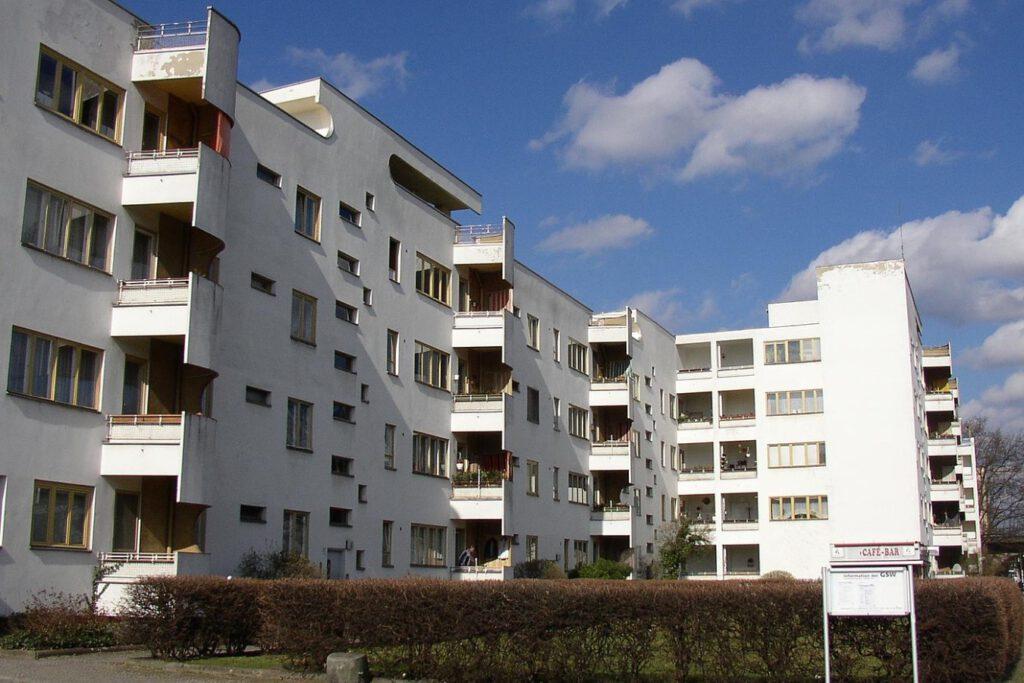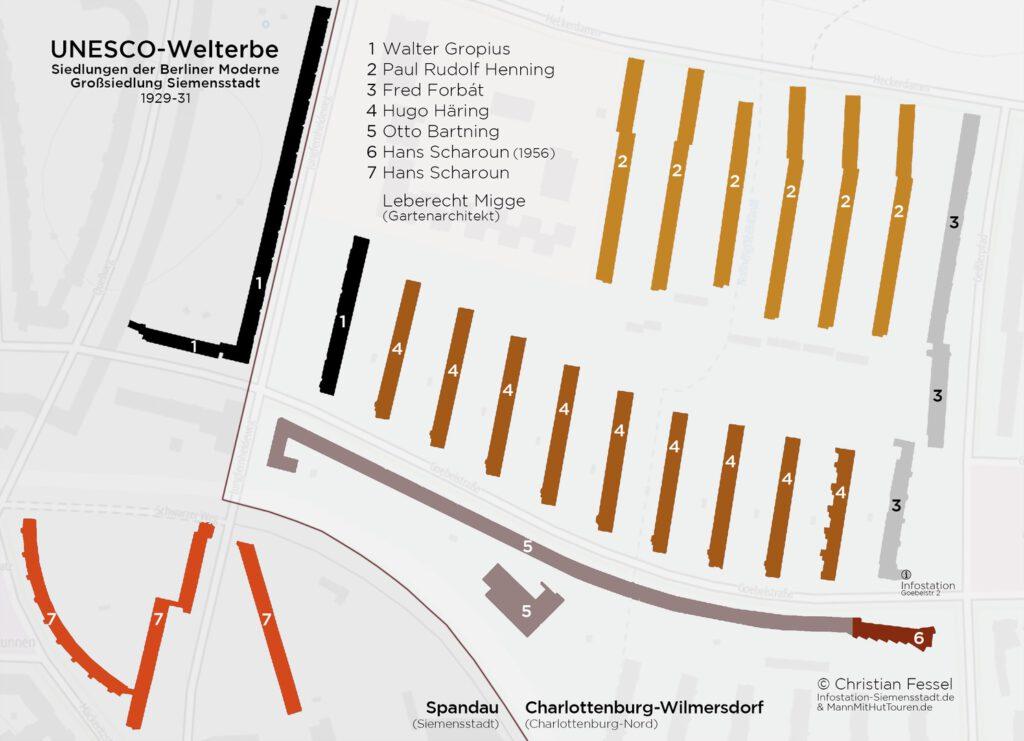Smart district on historic site
With a total of €600 million being invested, Siemensstadt 2.0 is the largest development project in the history of the Siemens Group. The winning design was submitted by Ortner & Ortner Baukunst. The new site will cover an area of 70 hectares and includes listed architectural monuments.
Introducing Siemensstadt 2.0: up until 2030, Siemens AG will be channelling €600 million into its largest ever single investment in Berlin, located on part of the “old Siemensstadt”. The vast industrial area between Berlin’s Charlottenburg and Spandau districts known as Siemensstadt – literally “Siemens City” – is being transformed into a versatile, state-of-the-art urban district of the future.
Winning design by O&O Baukunst
The new residential and working environment includes research areas such as electromobility, Industry 4.0, artificial intelligence and the Internet of Things. Some 20 designs were submitted to the Siemensstadt 2.0 urban development competition. Local firm Ortner & Ortner Baukunst, together with landscape architects capatti staubach, won over the judges.
This design is not the complete picture, but leaves room for necessary developments. It treats the historic buildings with respect while affording them a modern usage. The design fulfils virtually all today’s requirements, but also leaves room for the future development of a new, modern city where people can both live and work.
Jury led by architect Stefan Behnisch
The design can now be viewed online in the form of a 360-degree tour. Here, you can see the ratings given by the judges and view the architects’ ideas.
32 times the size of Alexanderplatz
The new Siemensstadt will cover an area of 70 hectares – 32 times as large as Berlin’s Alexanderplatz – and will include a number of listed architectural monuments. As a carbon-neutral smart district, Siemensstadt 2.0 will transcend the borders of spheres that are traditionally experienced together, bringing together research, technology and innovation, and also work, production and residential space.
Although it has been closed to date, in future the industrial area will be open to local people, with all ground floor zones forming a continuous, universally accessible “city level”. Taking centre stage is a distinctive high-rise overlooking a “city square”. The design avoids long streets and axes while creating open spaces and subareas of different sizes, the latter forming mixed districts with varying degrees of residential usage.
Urban neighbourhood of the future
Additional 60-metre buildings at selected positions mark the entrances to the area. Some of the Schaltwerk industrial halls are being repurposed for public and cultural usage, while the Schaltwerk high-rise will contain offices, apartments and a hotel.
The neighbourhood of the future is already on view: the grounds of Berlin’s Dynamowerk already play host to the A32 Entrepreneurs Forum Berlin Siemensstadt – a modern co-working space that offers a dynamic, flexible working environment for Siemens employees and start-ups alike. With over 1,000 m² of space and an industrial look, it not only reflects the history of Siemensstadt but also its departure into new territory. The focal point is the “work and event space” in a former warehouse.
Schedule for Siemensstadt 2.0
The master plan for the new district forms the basis for all urban planning strategies and suggestions. All questions relating to building law have also been cleared up – a condition for the urban development contract with the City of Berlin for the first module. The structural engineering planning stage may attract more local interest than any other. Initial construction work is scheduled for 2022.
When mechanical engineering factories, iron foundries and (later on) the electrical industry were relocated to the outskirts of Berlin – mainly to Moabit and Gesundbrunnen at first and then towards Tegel, Spandau and Oberschöneweide, major companies such as Siemens & Halske (S&H) and AEG were forced to move their entire production (or parts of it) to locations outside the city.
The original Siemensstadt
As the 19th century was drawing to a close, Siemens & Halske relocated to a new site on fallow land. However, the plan was not restricted to industrial buildings but also included residential areas, research facilities, and social and cultural amenities. This gave rise to a whole new district: Siemensstadt.
It was initially civil engineer Karl Janisch who gave Siemensstadt its distinctive look up until the First World War. With buildings like Kabelwerk Westend, Wernerwerk I and Dynamowerk, he constructed factories that were geared above all towards maximizing efficiency.
In the 1920s, his successor Hans Hertlein expanded Wernerwerk and built Europe’s first ever high-rise factory: the Schaltwerkhochhaus. His trademark modernist architecture continues to shape the Group’s image to this day – and not just in Berlin. For Siemensstadt, he not only constructed factory and administration buildings but also residential areas and social housing.
Ribbon development pilot
Even back then, the idea was to combine work, research and housing. And, among other things, to create as many small apartments as possible for Siemens’ less well-heeled employees, essentially as a place for them to just spend the night. However, it was also an admirable opportunity to try out the very latest ideas in urban planning, including ribbon development.
The zoning plan was the brainchild of German architect Hans Scharoun (1893-1972), one of the leading names in organic architecture. The individual buildings were designed by members of “Der Ring”. Founded in 1926, this collective of German architects belonging to the Neues Bauen movement included Walter Gropius. All residential buildings were designed with several storeys. The interior layout and room size were standardized – on average, a family of four received an apartment measuring 54 square metres in total.
The large housing estate was presented at the International Building Exhibition in 1931, as was the woodland housing estate “Uncle Tom’s Cabin” in Zehlendorf (at the edge of the Grunewald forest region) and “White City” in Reinickendorf. A total of six Berlin Modernism housing estates are UNESCO World Heritage Sites.
Text: Linda Benkö
Translation: Rosemary Bridger-Lippe
Images, photos: Siemens, Doris Antony, Christian Fessel, Alexrk2 wikimedia, O&O Baukunst
